Category: Aging
Falls Aren’t Always Funny

We have all seen the video where a person trips or stumbles over something and falls. When mixed with a few good sound effects, they are often humorous. It’s OK to be able to laugh at life sometimes but falls are more often than not a life-changing event, especially for older adults.
Falls are an important health concern. They often result in injuries more severe than just a scraped, bruised body and bruised ego. Falls are the #1 cause of accidental injury and death in people age 65+. Even what seems like a simple fall can lead to a trip to the emergency room or call to 9-1-1. Bone fractures and head injuries are common. Most of us are aware of the costs associated with an ER visit and other treatments but the full cost is far-reaching.
Accidental falls kill about 158 Idahoans each year at a cost of $164 million. We can easily calculate the cost from medical bills but what about lost productivity? What about the cost to have someone who takes time off work so they can take someone to medical appointments? What if that person had to hire someone for childcare while they provided transportation or in-home care? These are just the financial impacts of a fall. It is impossible to quantify loss of functionality, independence, and quality of life. For the 1 in 5 Idahoans who experiences a fall that results in significant injury, there is nothing funny about it.
These are certainly sobering statistics for those age 65+ but falling is not limited to older adults. They can happen to any of us. Are you ready for some good news? All falls are preventable. Fortunately, there are simple steps we can take to reduce the risk of falls. Invest the time now to learn how to reduce fall risk and become fall-free.
Idaho celebrates Fall Prevention Awareness Month each September!
Review and register for the four fall prevention seminars in September:
- The Importance of Fall Assessment as a Matter of Practice
- Why Falls Matter and How to Prevent Them
- Recognize and Remove Hazards at Home
- Simple Steps to Improve Balance and Prevent Falls
Descriptions, dates and registration available on the Commission for Aging website.
Take Action to Prevent Falls
It only takes a few simple steps to dramatically reduce our risk of falls. We can easily encourage others to do so as well.
- What is YOUR fall risk? Answer 12 yes/no questions to find out and get resources to help you reduce your risk.
- Are there hazards in your home? Do a safety check with this checklist to identify where to look for trip hazards and resolve them.
- Can you recover from tripping or losing balance? Stay active to maintain balance, strength, and flexibility by doing simple movements each day. Watch our Simple Steps seminar to learn more.
- Do your medications put you at more risk for falls? Ask about interactions and side-effects that may make you more prone to falling.
- Are you more likely to fall because you can’t see well? Check your vision and get correction (and wear your glasses) or learn skills to reduce misjudged steps and tripping on unseen obstacles.
Other than on TV and the movies, falls aren’t funny. Avoid the physical, mental, and financial impact of falls. Take charge of getting fall-free this fall!
The Dog Days of Summer Can Bite You!

How to Prepare for Power Outages
You know the feeling, and it’s a bad one. Suddenly everything in the house goes silent and dark. Power’s out. You run outside to see if it’s just you and check your breaker box. Meanwhile you are wondering: How long is it going to be out? (Did I charge my phone?) A few minutes is one thing. A few hours, even. But if you’re without electricity for days— or longer — real harm can result for both you and especially elderly shut ins.
We tend to take the power grid for granted, until it fails us. Based on demand, rolling blackouts are more common in summer. So, sooner or later chances are you may be facing an eerily quiet, dark house. What now?
The first action you should take is notifying your utility. Do not assume your neighbors have done it — besides, the more people that report an outage, the better they can pinpoint the problem. After critical care community services (like hospitals and airports) have power restored, utilities generally look to areas that can bring lots of customers back at one time. So, you cannot over-report.
However, don’t wait until the lights go off. It’s best to do research ahead of time to know what tools and resources your utility offers. Most utilities have methods of reporting outages via text message, dedicated phone app, or websites. Sign-up to receive outage updates on your cell. Do yourself a favor and set this up before the next outage.
If your provider is Idaho Power, input these phone numbers into your contacts to be prepared.
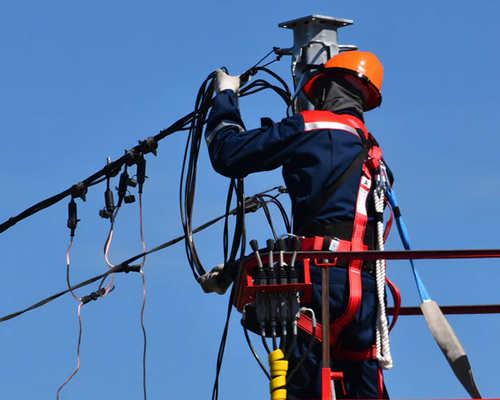
REPORT AN OUTAGE
- By Phone
- Treasure Valley: 208-388-2323
- Outside Treasure Valley: 1-800-488-6151
- By Email
- Send full name, address, and any relevant details to: outage@idahopower.com
If you, or especially your elderly family or neighbors rely on electrically powered medical equipment, be sure to notify both your local fire department and utility company.
What if it’s going to be an extended outage?
No matter the emergency, be ready with a disaster supplies kit like that detailed on ready.gov. That should include water, at least a three-day supply of non-perishable food, and things like manual can openers, flashlights and extra batteries (including for your cell phone). It is a good habit to keep all important prescriptions filled, and medical supplies well stocked.
Before deciding to stick it out, listen to authorities. If the outage is the result of a natural disaster or other calamity, it may be that you need to evacuate. But if you stay, take note of the time. When the outage strikes, the clock is ticking on the food in your refrigerator and freezer. The USDA says food in a fridge will stay safely cold for four hours if the door isn’t opened and a full freezer will maintain temperature for about 48 hours (if it’s half full, that’s 24 hours) as long as you keep the door closed. Don’t rely on just looking — and certainly not on tasting — to see if the food’s safe. Instead, keep appliance thermometers in the fridge and freezer. You want to see 40°F or below in the fridge and 0°F or lower in the freezer. When in doubt, take individual foods’ temperature with a food thermometer.
Even as we continue to move past a world-wide pandemic, it’s the common stuff, like power that can cause the most significant, instantaneous disruption to our daily activities.
Make sure to check in on your older loved ones or neighbors. It may be necessary to temporarily move them into your home or another safe living location until power is reestablished.
To learn more and be prepared follow the links provided in the resources.
Resources:
- Be Prepared for Outages
- Emergency Preparedness
- Power Outage Safety from American Red Cross
- Power Outage Tips from Ready.gov
Please visit the ICOA website at aging.idaho.gov for more great information on aging services.
Older Americans Month: Communities of Strength

In tough times, communities find strength in people—and people find strength in their communities. In the past year, we’ve seen this time and again in Idaho as friends, neighbors, and businesses have found new ways to support each other.
In our community, older adults are a key source of this strength. Through their experiences, successes, and difficulties, they have built resilience that helps them to face new challenges. When communities tap into this, they become stronger too.
Each May, the Administration for Community Living leads the celebration of Older Americans Month (OAM). This year’s theme Communities of Strength, recognizes the important role older adults play in fostering the connection and engagement that build strong, resilient communities.
Strength is built and shown not only by bold acts, but also small ones of day-to-day life—a conversation shared with a friend, working in the garden, trying a new recipe, or taking time for a cup of tea on a busy day. And when we share these activities with others—even virtually or by telling about the experience later—we help them build resilience too.
This year, the Idaho Commission on Aging (ICOA) will celebrate OAM by encouraging community members to share their experiences. Together, we can find strength—and create a stronger future.
Here are some ways to share and connect:

- Look for joy in the everyday: Celebrate small moments and ordinary pleasures by taking time to recognize them. Start a gratitude journal and share it with others via social media, or call a friend or family member to share a happy moment or to say thank you.
- Reach out to neighbors: Even if you can’t get together in person right now, you can still connect with your neighbors. Leave a small gift on their doorstep, offer to help with outdoor chores, or deliver a homecooked meal.
- Build new skills: Learning something new allows us to practice overcoming challenges. Take an art course online or try a socially distanced outdoor movement class to enjoy learning with others in your community. Have a skill to share? Find an opportunity to teach someone, even casually.
- Share your story: There’s a reason storytelling is a time-honored activity. Hearing how others experience the world helps us grow. Interviewing family, friends, and neighbors can open up new conversations and strengthen our connections.
When people of different ages, backgrounds, abilities, and talents share experiences—through action, story, or service—we help build strong communities, and promote better mental and physical health, and that’s something to celebrate!
Please join the Idaho Commission on Aging in promoting healthy actions that increase health, resiliency, and connection for all in our communities.
For more resources, visit the official OAM website, follow ACL on Twitter and Facebook, and join the conversation via #OlderAmericansMonth.
Visit the ICOA website at: https://aging.idaho.gov for more great information on Aging Services.
Please complete our educational series on how to Reduce Loneliness in Idaho.
Boost Your Budget

Decrease Financial Stress, Promote Health!
April 12th – 16th will be the second annual “Boost Your Budget Week: Find Your Benefits to Age Well” campaign, promoted by the National Council on Aging (NCOA). Every year, millions of Americans and thousands of Idahoans are eligible for, but not enrolled in, benefits that can save them money on health care, prescriptions, food, rent, utilities, and more. In 2014, only 63.4% of Medicare beneficiaries eligible for Medicare Savings Programs (MSPs) and Part D Low-Income Subsidy (LIS)/Extra help were enrolled in those programs, meaning that over a third of Medicare beneficiaries across the country – almost 3 million older adults and persons with disabilities! – were not enrolled. The national campaign seeks to bring together community partners to:
- Educate low-income Medicare beneficiaries and their caregivers about the benefits available to help improve their economic security and health
- Connect individuals to online (BenefitsCheckUp®) and community-based resources for screening and application assistance
Community and state agencies, including local businesses, that work closely with low-income seniors and adults with disabilities should join the effort in promoting “Boost Your Budget Week”. Organizations wanting to be a part of the campaign, can choose some of the following activities:
- Share information about benefits as part of a food drive, health fair, or tax assistance event
- Sponsor a “telethon” at your local radio or TV station
- Run ads in local newspapers or on social media
- Invite media, legislators, and the public to tour your facility and learn about the importance of benefits for your community
The official start date for “Boost Your Budget Week” is scheduled for Monday, April 12th, 2021, and runs until Friday, April 16th, 2021. Community and government partners wanting to take part and promote the campaign are more than welcome to begin at any time before this date.
For further information and resources needed to start planning your “Boost Your Budget Week” events, please visit the official “Boost Your Budget Week” website.
Your efforts can be life changing for low income seniors or people living with disabilities. Visit the ICOA website to learn more about the MIPPA/MSP programs.
Let’s Celebrate the National Senior Nutrition Program

Funded by the Older Americans Act, the National Senior Nutrition Program began in 1972 and has been meeting the nutritional, social, and wellness needs of Older Americans for nearly 50 years. Each March, the Idaho Commission on Aging recognizes its anniversary by celebrating the program’s rich history and tremendous value across the nation with the Area Agencies on Aging and all meal providers. The Administration for Community Living funds senior nutrition services, including home-delivered and congregate meals.

Reach out and encourage the elders in your life to consider attending a weekly congregate meal to promote a healthy mind and body!
March is a universal nutrition and diet awareness month, to raise the importance of nutritionally balanced diets for all ages and cultures, the importance of developing sound eating habits, while companioning physical activity to support overall strength and physical health. The U.S. Departments of Agriculture (USDA) and Health and Human Services release updated Dietary Guidelines for Americans every five years. Each edition reflects the current body of nutritional science and research on what to eat and drink to promote health, while reducing the risk of chronic disease.
Recommendations from the new Dietary Guidelines and MyPlate are to:
- Follow a healthy dietary pattern at every life stage.
- Customize and enjoy nutrient-dense food and beverage choices to reflect personal preferences, cultural traditions, and budgetary considerations.
- Focus on meeting food group needs with nutrient-dense foods and beverages and stay within calorie limits.
- Limit foods and beverages higher in added sugars, saturated fat, and sodium, and limit alcoholic beverages.
- Eat fruits and vegetables, fresh, frozen or canned. Eat dark green vegetables such as leafy greens or broccoli and orange vegetables such as carrots and sweet potatoes.
- Vary protein choices with fish, beans and peas.
- Eat at least three ounces of whole-grain cereals, breads, crackers, rice, or pasta every day. Choose whole grains whenever possible.
- Have three servings of low-fat or fat-free dairy (milk, yogurt, or cheese) fortified with vitamin D to help keep your bones healthy.
- Switch from solid fats to oils when preparing food.
By adopting these goals, your chosen theme strives to help people manage their weight successfully and reduce their risk of chronic disease while promoting general health.
In our busy, fast paced world, myths and misinformation on the internet, social media and other sources make nutrition and healthy eating confusing. Not to mention what is “good for you” is not the same for everyone. There is no one-size-fits all approach to healthy eating.
For more information on Congregate Meal Sites and Home-Delivered Meals, please contact your local Area Agency on Aging.
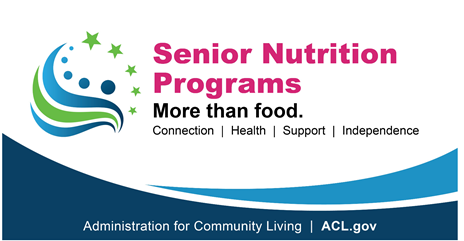
For additional nutrition information and free webinars during the month of March, please visit ICOA website and events. New nutrition education information will be provided starting March 1st and during the entire month.
Visit Administration for Community Living’s website to see how the healthcare system benefits if seniors eat a nutritious meal at a congregate meal site.
Use Technology to Prevent Loneliness

As we slowly recover from a much different holiday season, each of us may be adjusting in our own unique way. A sense of loss due to a change in holiday tradition, relief due to it all being over, or loneliness due to no longer being surrounded by family.
A 2018 survey of 20,000 adults conducted by Cigna showed that nearly half (46 percent) of 20,000 U.S. adults report that they feel alone sometimes or always. This loneliness is no-doubt felt fully by the aging population, and is likely exacerbated by both the pandemic, and post-holiday blues.
Although technology will never replace personal contact, it can bring a familiar face to the screen, conversations with a virtual friend, and more adventures than anyone could experience in a lifetime. Whether you prefer to visit the Louvre, chat with an artificially intelligent robot, or take a free course at Harvard, here are a few ideas to fill time and combat loneliness.
Social Media
Facebook, Instagram, etc. are a great platform to reconnect with old friends, see what is happening in your grandchildren’s lives and participate in games or social events.
Virtual Reality
Myndvr creates immersive virtual reality.

Webcams
Webcams give you the opportunity to experience real-time views of animals and places.
Elephants, Panda, Lion, Monterey Bay Aquarium, and National Parks
Robotics
Chat bots are artificial intelligence applications that respond to human interactions. Some of the most popular are apps Woebot, Replika and tabletop robot Elliq.
Online Classes & Activities
Senior Planet offers many free online classes, expanded with membership.
Virtual Support
Virtual Support is actual therapy support, only online.
Circles up offers emotional support for those struggling with loneliness, or other emotional issues.
Quarantine Chat allows people to chat on the phone. No phone numbers are exchanged, protecting everyone’s privacy.
Big and Mini is designed to bring older and younger adults together. This connection is designed to be a mentorship between a senior and a younger adult.
Sweet Readers connects youth 11-22 and seniors with dementia for 15 – 30 minute “story times”.
Robotic Pets
These robotic stuffed animals from Joy for All react like a live animal. These animals are a wonderful gift for someone with dementia, or who has had to give up their special pet.
Education
Free online courses at many colleges including: Harvard; Stanford; and Yale
Boise Community Education also has a variety of online classes
Links to New Adventures
This is only a small sampling of available virtual tours.
Science: NASA; North Carolina Museum of Natural History
History: Smithsonian Natural History Museum; American Battlefields; National Museum of the US Air Force
Art: Louvre Museum; VanGough Museum; Albertina Museum
Other: National Aquarium; National Parks; and Washington DC
Loneliness is as bad for your health as being obese or smoking 15 cigarettes a day. (Holt-Lunstad, 2015)
These statistics show us the importance of working towards a solution. Technology is not the complete answer, but it brings us one step closer to disrupting the silent epidemic of loneliness.
Although many seniors may find technology intimidating, we cannot overlook the advantages.
If you have a senior in your life, take the time to teach them about technology. The knowledge will enhance their lives, but the time spent with them will enhance yours.
Dementia Capability

As the number of adults living in the United States grows, the number of individuals living with dementia grows along with it. People who live with dementia and their caregivers often require and benefit from a broad array of services and supports that help them continue living in the community. As a result, the Idaho Commission on Aging and Area Agencies on Aging (AAAs), which have decades of experience helping older adults and people with disabilities remain in their homes and communities, are at the front lines of providing critical services and have been developing a statewide program to ensure access to sustainable, long-term services and supports that can meet the needs of persons with Alzheimer’s disease and related dementia and their caregivers.
Supports include:
- Rest for the caregiver. Several publicly funded respite programs exist in Idaho, contact your local Area Agency of Aging to learn more.
- Alzheimer’s Association of Greater Idaho
- Family Navigator Pilot (SW Idaho)
- Powerful Tools for Caregiver classes. A 6-part workshop designed to help family caregivers find balance while caring for a loved one.
- ICOA Website and Dementia Skills online course
Researchers continue to examine ways to prevent or delay dementia and a 2017 review by National Academies of Sciences, Engineering, and Medicine, found evidence that three types of interventions–cognitive training, blood pressure control, and increased physical activity–could help prevent or slow cognitive decline and dementia (NAP, 2017). Similarly, the Centers for Disease Control and Prevention (CDC) supports the concept that brain health is connected to heart health. The CDC recommends steps such as controlling blood pressure, eating healthy foods, limiting alcohol, managing diabetes, not smoking, and staying active as ways to reduce risk factors for dementia.
Sources:Academies of Sciences, Engineering, and Medicine, Preventing Cognitive Decline and Dementia: A Way Forward; https://www.nap.edu/resource/24782/Highlights062217CognitiveImpairment.pdf
U.S. Centers for Disease Control and Prevention, Brain Health Is Connected to Heart Health; https://www.cdc.gov/aging/publications/features/healthy-body-brain.html
Saving for Retirement

No one can predict the future. That is why saving for retirement is so complicated. As members of PERSI, State of Idaho employees are in an enviable position in our retirement planning strategy. However, there are several options above and beyond our PERSI 401(k) that can help us save for our retirement years. Let’s look at some strategies and products we can use to boost our retirement savings.
Strategies
- Set a goal. Determine how you want to live out your retirement years. Do you want to travel the world or stay home and tend to your garden? How much money will you need to accomplish these goals? A popular rule of thumb is to plan to have savings of about 25 times your expected annual expenses. At retirement you can withdraw 4% each year to live comfortably. Remember that commuting expenses will go down, but healthcare related expenses may go up.
- Use a retirement calculator. There are several comprehensive retirement calculators available online by reputable investment companies.
- Start early. The benefit of compound interest means that any interest you earn is added to the base savings amount and new interest is earned on top of that. Over time, this is a powerful way to save for retirement. Plan to contribute at least 10% of your gross earnings to whichever savings plan you choose.
- Automate. Set up automatic contributions to your retirement savings plan to support your goals. You do not need to think about it, it is already done!
- Delay claiming Social Security benefits as you near retirement age. For each year you wait (until age 70), your benefit will increase.
Products
- Traditional IRA: Your money is not taxed at the time you contribute it. This means that your full contribution earns interest. Your income must be under $124,000 annually to qualify. The contribution limit is $6000 per year, unless you are over 50 at which time the limit increases to $7000. You can begin drawing funds when you reach 59 ½ years old, and you must start drawing at age 72.
- Roth IRA: Your money is taxed up front. This allows you to not pay taxes during your retirement years. The income limit is the same as the traditional IRA, however you can make partial contributions if your salary is under $139,000. If the account has been open at least five years, you can begin withdrawals at age 59 ½, but there is a 10% penalty if you choose to withdraw earlier. There are no minimum withdrawals required.
Traditional and Roth IRA requirements do change, so be sure to research each option fully before signing on the dotted line. Also, a traditional IRA can be converted to a Roth. Evaluate your mindset and don’t let your short-term goals derail you from your long-term goals. To learn how to keep your hard earned savings safe and avoid fraud, refer to the valuable resources on the Idaho Commission on Aging’s website.
Residents’ Rights
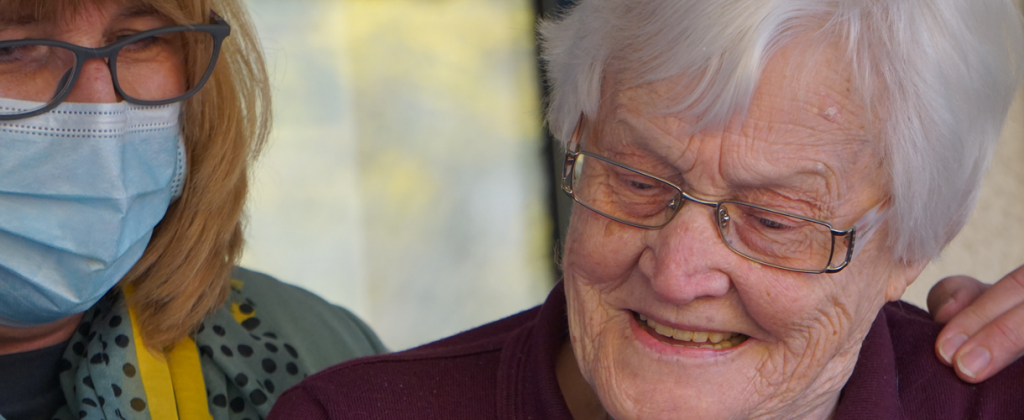
If you or a loved one resides in a nursing home or assisted living facility, then residents’ rights matter!
Idahoans maybe unaware that their rights continue even though they are residing in a long-term care facility. Rights do not end once you step through the door of a nursing home or assisted living, rather knowing your rights become even more important. Exercising your rights has no time limitations, age criteria or location requirements.
Both nursing homes and assisted living facilities are required to do assessments of needs upon admission and develop a plan of care which is centered around your personal needs, preferences, and values.
Care plans should be developed with each individual resident in mind. What are your likes, dislikes, what do you enjoy doing and when would you like to do it?
Making and communicating your preferences and needs for care will increase quality of life and overall satisfaction.
Your Rights Include:
- Right to a dignified existence.
- Right to self-determination.
- Right to be fully-informed.
- Right to raise grievances.
- Right of access.
- Rights regarding financial affairs.
- Rights during discharge or transfer.
Awareness of your rights is the first step to exercising them.
Each facility should have posted residents’ rights in a common area where they are accessible to resident and family. If you are not able to find a copy of the residents’ rights in your facility, ask a staff where they are located. If you feel that your rights are not being respected contact your local ombudsman and they will advocate for you and assure your rights are honored.
Ombudsman resolve complaints, protect rights, and promote access to services and good care for resident residing in Long Term Care facilities. The Older Americans Act (OAA), Title VII, Chapter 2, Sections 711/712 and 45 CFR § 1324.13 Federal Regulation require the Ombudsman program provide services to assist residents in protecting their health, safety, welfare and rights.
Dementia Skills Training
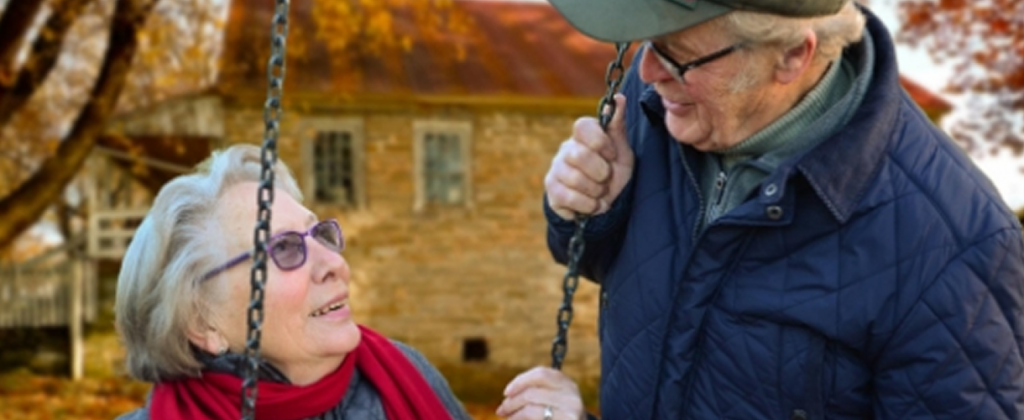
You shouldn’t have to sacrifice your well-being to take care of someone you love. The Idaho Commission for Aging is here to help anyone struggling to care for a loved one with dementia with a free online Dementia Skills Training. Learn practical knowledge and strategies to help people living with dementia enjoy moments of human connection, beauty, and personal satisfaction.
Many forms of dementia are classified as disorders or diseases, but there aren’t treatments that will cure or stop the disease. So, the world of physicians and medication are not the answer for dementia. Instead the goal is to maintain the highest quality of life, to focus on capabilities, and maintain connections to interests, nature and people. This free online training can enhance your skills and make you a more confident caregiver. Through a series of brief training modules, caregivers learn all types of practical knowledge and tools to improve communication and understanding with people experiencing the middle stages of dementia.
Learn more about feeling satisfaction and connection in your relationship to a person with dementia.
To learn more and to access the free training modules, visit the Idaho Commission for Aging’s website* at https://aging.idaho.gov/stay-educated/dementia-skills/
The Idaho Commission for Aging suggests accessing their website in Chrome because it works better than other web browsers.
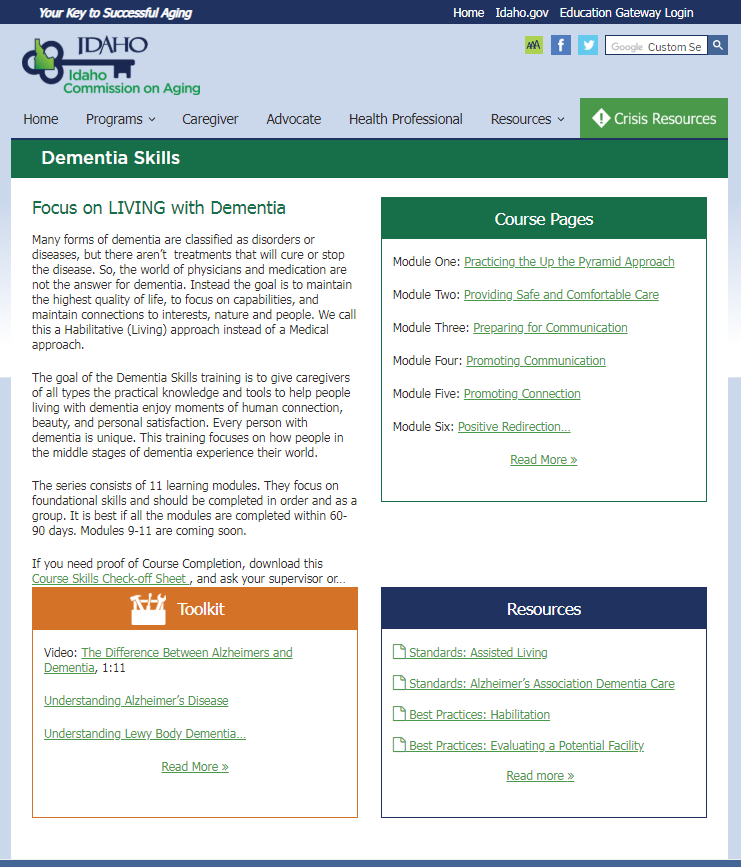
Written by the Idaho Commission on Aging
 Official Government Website
Official Government Website